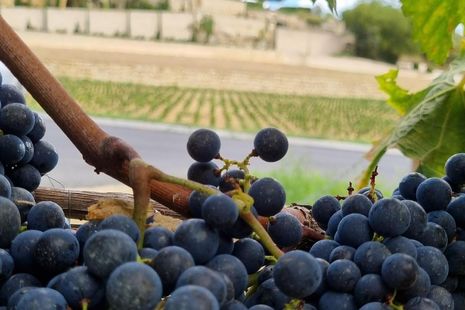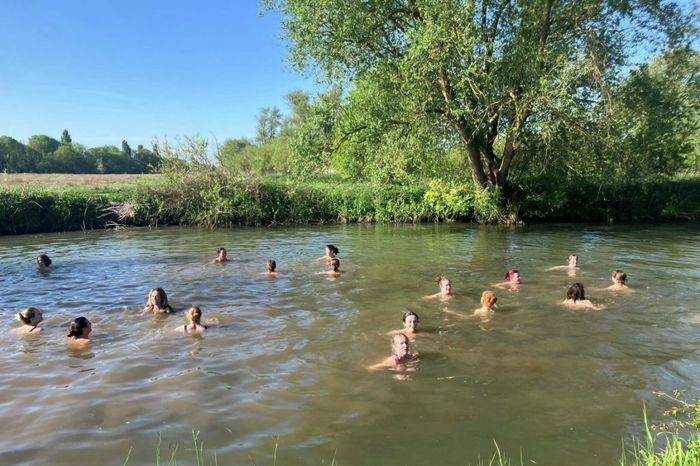There is a future for winemaking in Cambridgeshire
Aaron Syposz explores how local winemaking has been impacted by climate change and improved knowhow

Where is the world’s wine made? The places that come to mind – the rolling hills of Argentina, Italy or France – all possess the ideal climates for viticulture, and boast strong traditions of wine production and consumption. As the climate changes, though, so too do the places where it is possible to produce wine. In the future, could we be talking about our corner of the East of England – Cambridgeshire, Essex, Bedfordshire – the same way we talk about the famous fields of Champagne or Mendoza? The founder of Cambridge’s first winery, Chris Wilson, thinks that the future for wine in our region is bright.
The story of Gutter&Stars, the winery Chris founded in 2020, is the story of the significant but nuanced progress that has been made in England’s wine sector over the past thirty years. Two crucial things have changed: England, particularly in the East, has become warmer and drier, making higher-yield vineyards more viable, and the sector has become more professional. More hobby than vocation twenty years ago, today English viticulture is turning into a serious industry.
“More hobby than vocation twenty years ago, today, English viticulture is turning into a serious industry.”
But how serious, exactly? In Cambridgeshire, the scope remains limited. “The fenland isn’t ideal,” Chris explains, because “there isn’t enough clay.” The sheet structure of clay soils makes it ideal for viticulture. While Cambridgeshire, despite its sandier land, possesses one of England’s oldest vineyards, Chilford Hall, Chris sees the best prospects in the clay-rich soils of Essex. He sources most of his grapes from Essex in an attempt to keep his business as locally rooted as possible. The county already has over 300 hectares’ worth of vineyard, which made it a significant contributor to the 20 million bottles of wine produced in the UK during the bumper crop of 2023.
The bumper crop of 2023 was aided largely by a long, warm September – the type of which we are seeing more and more in the region as a result of climate change. Is climate change the principal force advancing the English wine industry, then? Not exactly, according to Chris. Grapes do prefer warmer, drier conditions. This warmth is particularly important for the grapes used for still wines produced in Essex which Chris relies on. The increasing extension of summer into the autumnal months in what Chris refers to as the “long September” means vineyards have more time to produce more grapes, expanding the potential maximum number of English wines produced each year and making the market more viable.
But there’s a catch: climate change isn’t facilitating a neat, linear progression towards warmer weather, but is increasing chaos and unpredictability in the passage of the seasons. The risk is that a vineyard’s productive phase is triggered by, say, a warm February, and then quickly killed off by a frost in March, or persistent rains which bring pests and diseases. Chris says he has seen some vineyards lose up to 50% of their harvest due to a single instance of frost. The changing climate, then, can benefit yields, but it also raises the stakes and makes ventures more risky.
“Climate change isn’t facilitating a neat, linear progression towards warmer weather, but is increasing chaos and unpredictability in the passage of the seasons.”
Relying on nearby Essex for support allows Chris to keep his business locally rooted. As a Cambridge local, he maintains strong ties with the city and its student population. Location in an affluent university town also brings with it certain advantages: a strong, enthusiastic local market, both for the wine itself and for wine tourism, and the opportunity to add a pedagogical flair to his work. His Chesterton Mill winery hosts tasting events during which he explains his production process.
Some University societies also make use of his services to run events, such as the Cambridge University’s Wine Society, which Chris helped run tasting events at his mill HQ. This aspect is important to Chris. He entered the wine industry after a stint in journalism, having studied the scientific techniques of winemaking in order to make a career from it. Winemaking is, he explains, both a science and an art. It requires technical knowledge, as well as taste and creativity.
This knowledge, finally, may be the decisive factor driving the English wine industry forward. English winemaking is no longer the project of hobbyists using guesswork on tiny plots of land. Scientific knowledge of the sliding molecular sheets of clay versus the clumping tendencies of sand, or of the chemical processes involved in a 28-day fermentation versus a 34-day one, may have ultimately changed the game.
This knowledge is crucial as vineyards and wineries adapt to the unpredictable effects of climate change. Longer and more erratic summers put the East of England’s wine industry in a context of greater risk, but potentially greater reward. The future of wine in Cambridge’s environs, which Chris calls “the San Francisco of the Fens” looks promising. Today, it is already being realised in Chesterton Mill in Cambridge, on the Missing Gate Vineyard in Essex, and on a growing number of sites across the region.
 News / SU stops offering student discounts8 January 2026
News / SU stops offering student discounts8 January 2026 Comment / Plastic pubs: the problem with Cambridge alehouses 5 January 2026
Comment / Plastic pubs: the problem with Cambridge alehouses 5 January 2026 Science / New year, new room, new you8 January 2026
Science / New year, new room, new you8 January 2026 News / Uni-linked firms rank among Cambridgeshire’s largest7 January 2026
News / Uni-linked firms rank among Cambridgeshire’s largest7 January 2026 Comment / What happened to men at Cambridge?31 December 2025
Comment / What happened to men at Cambridge?31 December 2025










